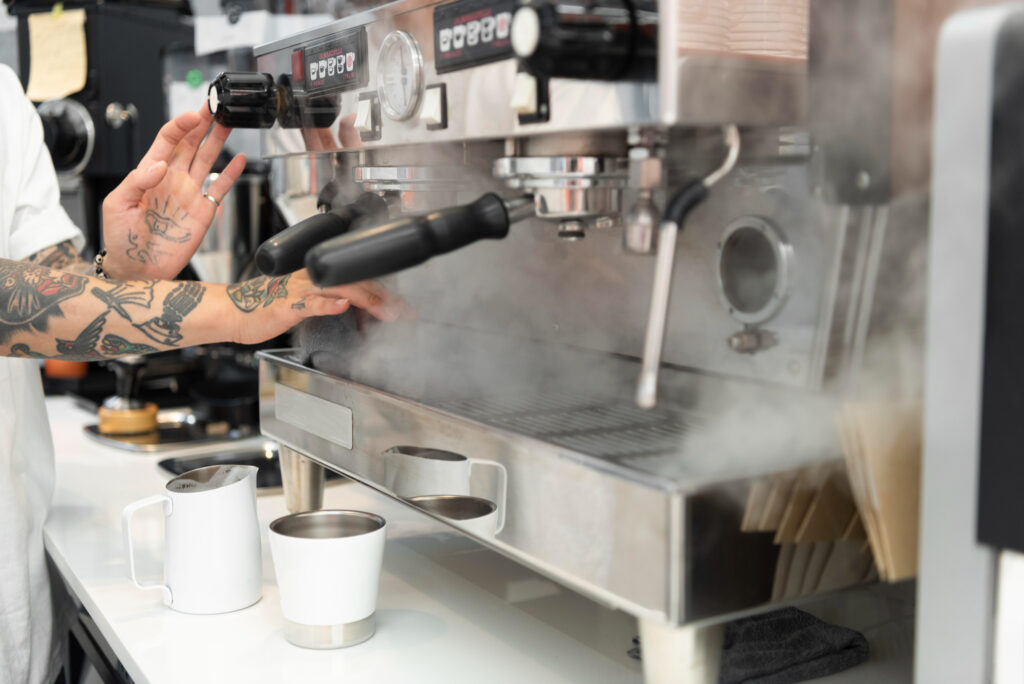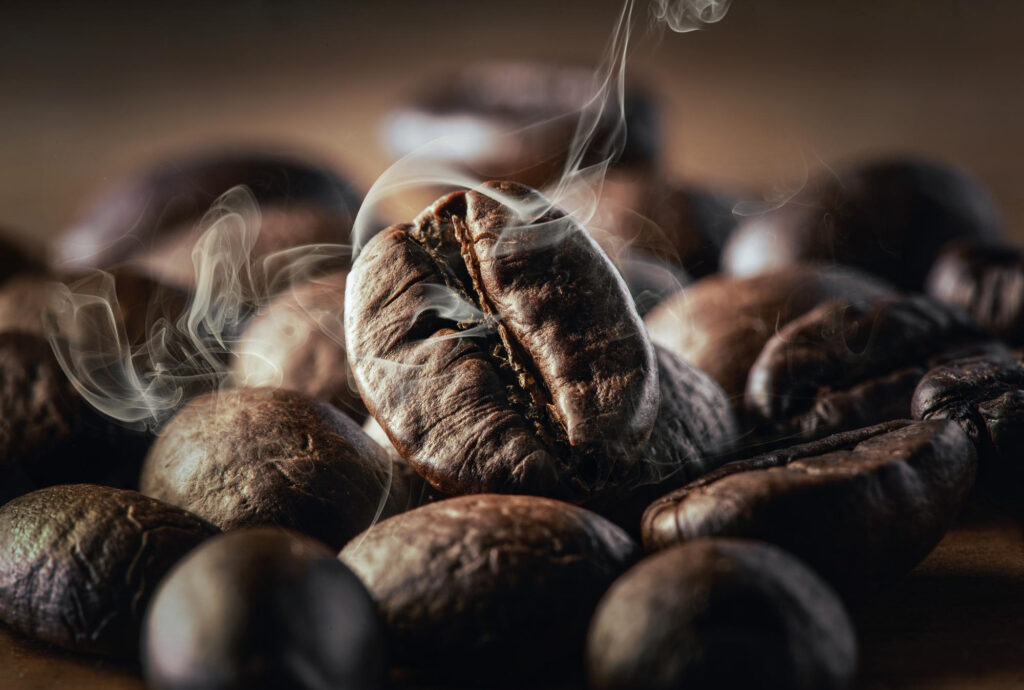When we talk about a cup of coffee, we present our favorite drink – cappuccino, latte, Americano, or flat white. The basis of each of them is espresso – a small shot of coffee with a rich taste and bright aroma. And he, in turn, is impossible without using a coffee machine.
The prototypes of coffee machines appeared at the beginning of the XIX century, about 50 years after the invention of a stationary continuous steam engine. The Frenchman Louis-Bernard Babot tried to pass a steam-water mixture under pressure through ground coffee in 1822. But the result of his experiment is not known to us for sure since it did not come to mass production. In 1843, Edward Loisel de Sante presented a coffee machine for commercial use, and after 12 years of technical improvements presented his device at the Paris Exhibition.

Due to a large amount of steam released, it was on the street, and two people serviced it at once: one threw coal into the furnace, and the second monitored the pressure. When the water in the boiler boiled, he poured several kilograms of ground coffee into a unique hopper, pulled the lever, and several liters of the finished drink poured out of the tap. Despite its considerable size, it made a huge splash (of course, such a sight, and there is almost no queue!)
But the largest concentration of European people who wanted to create a mechanical coffee machine was in Italy. One of the most outstanding is Luigi Bezzera. Thanks to him, the portioned preparation of the drink became possible. He was able to fix the filter holder (now called holder, or in simple terms – horn) to the group separately and prepare as much coffee as was necessary for the current order. Among other advantages, Luigi’s machine was much smaller than Leuzel’s, allowed heating milk or cream with steam from the boiler, and in cafes and restaurants throughout the country. In 1903, Desidero Pavoni bought the patent for production from Bezzera, and already in 1905, he started the manufacturing process in his workshop.
In 1912, the copper soldering iron maker Giuseppe Cimbali opened his copper parts and spare parts shop for coffee machines in the slums of Milan, and by 1930 he was creating his first coffee machines heated with coal. In the 40s, he started three more models, where a gas one replaced the coal system. In the 50s, he patented the first coffee machine with a horizontal boiler, then an automatic hydraulic group, and finally, in 1960, he patented the use of a heat exchanger for each group to obtain a constant water flow temperature.
And the first electric-powered coffee machine was launched in 1961 by Faema. Since then, the design of carob coffee machines has remained virtually unchanged, but it is continuously being improved and supplemented with such modern options as the function of pre-wetting the coffee tablet, espresso quality control, automatic milk whisk, etc. For the guest of the coffee shop, all coffee machines look very similar – they attract the eye with their retro or futuristic design. And inside: a water heating tank made of copper, tubes, and wires.

By the way, one of the primary differences between coffee machines is the number of boiler tanks. For single-boiler coffee machines, excessive boiling water or steam consumption can affect the prepared espresso because the entire coffee machine operates on a single boiler with a built-in thermostat. In double–boiler coffee machines, one boiler supplies water to the espresso groups, and the second to the steam drain and the supply of boiling water. If a separate boiler serves each group, this is a multi-system. It allows you to use steam pressure more efficiently and maintain water temperature—excellent quality of both milk and coffee in multi-boiler machines due to more excellent thermal stability.
Coffee machines are also automatic and semi-automatic. Here the whole point lies in the preset settings. In more “stuffed” models, it is possible to set different temperatures for the coffee group, the cooking time, or the volume of water supplied. After setting up the recipe, the barista will only need to press a button to start the process. This type is called automatic. Here, the taste of the coffee will depend on the preliminary work of the barista with the recipe and the control of other components: grinding, dosage, and ramming. In semi-automatic coffee machines, as in the first invented ones, only one button activates the spill in the group.

Additional (but optional) options can be: built-in scales, cooking time timers, preheating, or even extraction calculation to simplify the work of a barista and reduce the influence of the human factor taste of espresso.
Desidero Pavoni, Giuseppe Cimbali, Achille Gaggia, Roberto Rancilio, Francesco Illi, and the brothers Giuseppe and Bruno Bambi are the people to whom we owe the invention and development of the espresso machine. Many participated in developing prototypes, and some have created entire factories and manufacturers that delight us with their designs and products.



